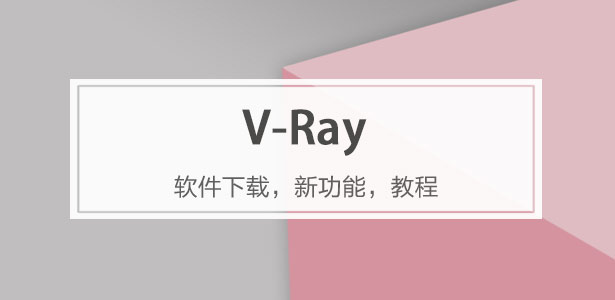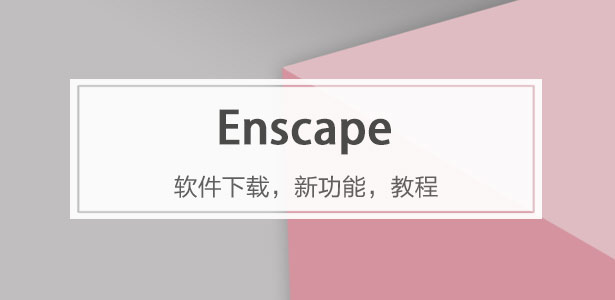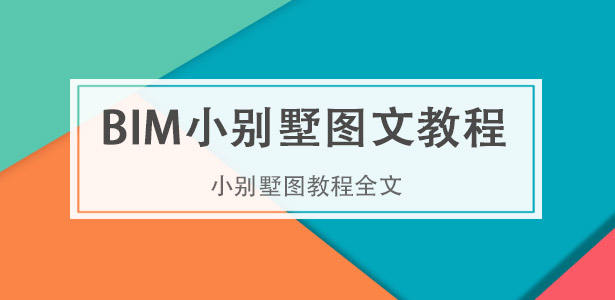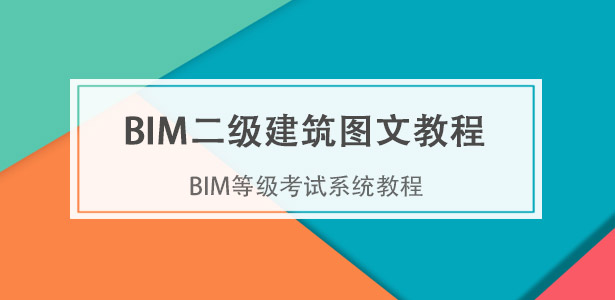
下載app免費領(lǐng)取會員





設(shè)計單位? Kokaistudios(總體規(guī)劃及建筑概念設(shè)計、A+C廠房的建筑及室內(nèi)空間改造、新建建筑的方案設(shè)計)
新建建筑深化設(shè)計方案及落地執(zhí)行? AICO
建筑施工圖設(shè)計單位? 中船第九設(shè)計研究院
項目地點? 浙江紹興
開業(yè)時間 2024年9月
建筑面積? 6.1萬平方米
本文文字由Kokaistudios提供。
紹興天地的前身871芯片廠不僅是紹興的標(biāo)志性企業(yè),更是中國集成電路產(chǎn)業(yè)的搖籃。隨著紹興芯片版圖的進(jìn)一步擴大,原871芯片廠于2018年停工關(guān)廠;2024年由華潤置地進(jìn)行全面的改造升級,開啟了其作為“城市客廳”的新篇章。
The former 871 Chip Factory was not only a landmark enterprise in Shaoxing but also the cradle of China's integrated circuit industry. As this industry expanded, the factory ceased operations in 2018. In 2024, CR LAND undertook a comprehensive renovation and upgrade, opening a new chapter for the site as “SHAOXING PLACE by MixC” envisioned as an “urban living room”.

項目位于紹興古城中心,距離著名的歷史街區(qū)與旅游區(qū)僅2公里,毗鄰府山公園與紹興博物館。由于紹興城中水系脈絡(luò)繁多,項目地塊四面環(huán)水,主要交通均與市區(qū)主干道相接,提供了便捷的城市可達(dá)性。作為華潤置地在紹興的第一個文商旅住綜合體項目,紹興天地采用“街區(qū)+mall”的商業(yè)形態(tài),融合了871芯片廠的歷史文化基因和珍貴的工業(yè)記憶,旨在打造集美食、文化、娛樂、零售于一體的城市新地標(biāo),更新激活古城的商業(yè)與生活氣息。
Located in the heart of Shaoxing’s ancient city, the project is only 2 kilometers away from the famous historic and tourist districts, and adjacent to Fushan Park and the Shaoxing Museum. Blessed by Shaoxing's extensive network of riverways, the site is surrounded by water on all sides, while convenient urban accessibility is ensured with its primary accesses connected to the city’s main roads. As CR LAND's first cultural, commercial, tourism, and residential complex in Shaoxing, the development adopts a “blocks + mall” commercial model, merging the historical legacy of the 871 Chip Factory with its valuable industrial memory. The project aspires to establish itself as a dynamic urban hub, combining dining, culture, entertainment, and retail, revitalizing the commercial and lifestyle ambiance of the ancient city.
項目總建筑面積約為6.1萬平方米,保留有A、B、C三棟廠房。2021年,Kokaistudios領(lǐng)銜紹興天地的總體規(guī)劃及建筑概念設(shè)計、A+C廠房的建筑及室內(nèi)空間改造、新建建筑的方案設(shè)計工作。
With a GFA of approximately 61,000 sqm, the project retains 3 main factory buildings: A, B, and C. Kokaistudios lead the overall urban planning and architecture concept design for SHAOXING PLACE by MixC, the architecture renovation and architectural interior design of Factories A and C, as well as the architecture schematic design of new buildings.


場地總體規(guī)劃
場地內(nèi)所保留的3個廠房之間布局較為分散,A、B廠房間距長達(dá)60米,加之周邊原有建筑悉數(shù)拆除余留下的空白,為步行體驗帶來挑戰(zhàn)。如何重新梳理體量龐大的工業(yè)遺存,打造出既適宜步行、動線清晰,又具有空間連貫性和場地完整性的規(guī)劃,是設(shè)計團(tuán)隊面臨的首要任務(wù)。
The layout of the 3 preserved factory buildings is relatively dispersed, with a gap of up to 60m between Factories A and B. Additionally, the cleared surroundings resulted in empty spaces that challenge the pedestrian experience. Kokaistudios’ primary task was to reinterpret the massive industrial heritage, in a way that not only improves walkability and circulation but also maintains coherence and integrity across the site.
建筑師以打造多元公共空間的角度破題,將公共空間巧妙地劃分為三個層次:首先是占據(jù)核心地帶的中央廣場,其次是新建三個建筑組團(tuán)中所圍合的內(nèi)庭院,以及A與C廠房中精心設(shè)計的中庭空間。
The design approach focused on creating a network of public spaces at 3 levels: a central square at the core; enclosed courtyards within 3 newly constructed villages; meticulously crafted atriums in Factories A and C.




此外,團(tuán)隊還精確梳理了場地功能分區(qū)與周邊環(huán)境的關(guān)系。設(shè)計注重保持東側(cè)濱水界面的通透感,通過設(shè)置開口,使水岸景觀與場地內(nèi)部自然融合。餐飲區(qū)域被精心布置于濱水沿岸,同時配備室外庭院,為顧客提供了絕佳的觀景體驗。
Moreover, the team precisely defined the relationship between the site's functional zoning and the surrounding environment. The design emphasizes a sense of transparency along the eastern waterfront interface, incorporating openings that allow the waterfront landscape to naturally blend with space within the site. The dining area is strategically arranged along the waterfront featuring outdoor courtyards to enhance an excellent viewing experience.




為了進(jìn)一步提升項目的商業(yè)活力,東西向的主軸線被打造成為一條充滿活力的高街,為多元化的主力店鋪入駐創(chuàng)造有利條件,從而確保了紹興天地項目的獨特魅力和商業(yè)價值。
To increase the project's commercial vibrancy, the East-West main axis has been transformed into a lively high-street, offering an ideal setting for diverse flagship stores, further ensuring SHAOXING PLACE’s commercial value and unique appeal.


舊廠房的建筑及空間改造

A廠房原作硅片制造使用,鑒于其生產(chǎn)流程對空氣質(zhì)量要求極為嚴(yán)苛,廠房中心區(qū)域設(shè)有一層2,000平方米的網(wǎng)格形通風(fēng)樓板,由高約3.5米的立柱群支撐,形成了封閉的獨立空間。如果單純將此空間用于傳統(tǒng)商業(yè)布局,不僅影響空間整體的通透與連貫,還會大大降低二層的利用效率。
Factory A was originally used for silicon wafer production, requiring stringent air quality controls. Therefore, its central section features a 2,000m2 grid-shaped ventilation floor supported by a cluster of 3.5m high columns, creating a closed independent space. Simply applying this space to traditional commercial layouts would not only disrupt the overall transparency but also significantly reduce the utilization efficiency on the second floor.
因此,設(shè)計團(tuán)隊創(chuàng)造性地保留了通風(fēng)樓板的核心部分,而在建筑主體內(nèi)圍增設(shè)一圈環(huán)形走廊,與樓板核心區(qū)相連通。如此一來,中央的樓板宛如一座引人矚目的視覺島嶼,既可作為展示秀場、T臺等多種業(yè)態(tài)的舞臺,又極大地提升了下方商業(yè)空間的價值與體驗。
Kokaistudios innovatively retained the core section of this feature and introduced a circular corridor around the main structure, connecting it to the core section. As a result, the ventilation floor is transformed into a captivating visual island, serving as a versatile stage for exhibitions and fashion shows, adding value to the commercial space below.






A廠房建筑南立面的水平帶狀長窗和兩側(cè)突出的圓弧形樓梯體現(xiàn)出鮮明的現(xiàn)代建筑風(fēng)格特征。設(shè)計團(tuán)隊最大化地將這類特征保留,并將兩個弧形樓梯改造為U型玻璃的燈塔,如今它們已成為這里的精神堡壘,喚起人們對舊時工業(yè)精神的回憶。
The southern facade of Factory A, with its horizontal strip windows and curved staircases, showcases modern architectural elements. The design team preserved these features, transforming the two curved staircases into U-shaped glass towers. Today, these structures serve as a symbolic beacon that evokes memories of the old industrial spirit.


C廠房在未改造前為框架結(jié)構(gòu)單層工業(yè)廠房,它在高度和屋頂形式上與周邊的兩座廠房均有很大不同,也缺乏立面和結(jié)構(gòu)特色。設(shè)計團(tuán)隊將平屋頂局部拆除并加建了一層,采用坡屋頂形式的同時引入大面積天窗,保證內(nèi)部充足的自然光照。
Prior to the renovation, Factory C was a single-story industrial building with a plain facade and a frame structure, significantly differing in height and roof shape from the other two factories. Kokaistudios partially removed the flat roof and added a second floor, incorporating a sloped roof while introducing large skylights to ensure ample natural light.

改造后的C廠房在體量和形態(tài)上呼應(yīng)A、B兩座廠房,新增的二層空間創(chuàng)造了極具可塑性的中庭空間。空間設(shè)計改造的概念為“house in house”:從建筑而言,C廠房本身是一個大的house形態(tài);而增加的二層空間被天窗、延伸出的豎直側(cè)板和翻折呈水平向的天花板圍合成一個體量較小的house。兩個形態(tài)一致而體量相異的空間相嵌套,呈現(xiàn)出富有幾何趣味的設(shè)計語言。
The renovated Factory C now resonates in volume and form with Factory A and B, while the newly added second floor creates a highly versatile atrium space. The architectural interior renovation is centered around the idea of a “house in house”: the outer shell of the factory is a large house, while the added second floor, enclosed by skylights, vertical side panels, and a horizontally folded ceiling, forms a smaller “house” inside. This interplay of volumes creates a design language marked by geometric elegance.




新建建筑組團(tuán)

為有效縮短A與C廠房之間的空間尺度感,設(shè)計在兩者之間嵌入了一棟新建筑,這不僅實現(xiàn)了室內(nèi)的直接連通,更在室外引入了大型臺階,顯著增強了兩棟建筑之間的圍合感。臺階的設(shè)置不僅是物理連接的延伸,更成為了一個鼓勵人們駐足休憩、放松身心的公共空間,從而豐富了整體環(huán)境的功能性與人文氣息。
To bridge the gap between Factories A and C, a new building was inserted between them, providing indoor connectivity and outdoor stepped terraces, enhancing the sense of enclosure between the two structures. The steps serve not only as a physical connection but also as a public space that encourages people to pause, relax, and unwind, enriching the overall functionality and cultural atmosphere.

場地內(nèi)另新增有三大建筑組團(tuán),織補并強化城市肌理。新建筑的靈感依然來自舊廠房的意向,設(shè)計將大體量切分為一個個“小廠房”的有機組合;在屋頂處理上摒棄了單一且冗長的坡屋頂結(jié)構(gòu),以打斷和錯動的手法讓屋頂在高度上產(chǎn)生變化,保留傳統(tǒng)的形象語言的同時讓立面更加現(xiàn)代生動。
3 additional villages were constructed, weaving and reinforcing the urban fabric. The design draws inspiration from old factories and divides the large volume into an organic composition of smaller “factory-like” structures. It avoids a singular and monotonous sloped roof, instead employing a method of offsetting to create variations in height. This approach preserves the traditional architectural language while giving the facades a more modern and dynamic appearance.




隨著城市發(fā)展與迭代更新,大量的工業(yè)遺存逐漸進(jìn)入了存量創(chuàng)意營造的新階段。如今的紹興天地已蛻變?yōu)槭忻裆钯徫铩⑽幕涣鳌蕵沸蓍e的標(biāo)志性目的地,而這次成功的改造實踐不僅使曾經(jīng)的871芯片廠保留了曾經(jīng)的工業(yè)歷史榮光,更在全新的時代與語境下迸發(fā)出新的活力,見證每一天繁榮鮮活的城市日常。
As urban development and iterations progress, a large number of industrial relics have entered a new phase of creative revitalization. Today, SHAOXING PLACE has transformed into a landmark destination for shopping, cultural engagement, and leisure activities. This successful renovation not only preserves the industrial heritage of the former 871 Chip Factory but also revitalizes it with new energy within a contemporary context, witnessing the vibrant and prosperous daily life of the city.
設(shè)計圖紙 ▽








完整項目信息
項目名稱:紹興天地
地點:中國,浙江,紹興
客戶:華潤置地
開業(yè)時間:2024年9月28日
建筑面積:6.1萬平方米
設(shè)計單位:Kokaistudios
服務(wù)范圍:總體規(guī)劃及建筑概念設(shè)計、A+C廠房的建筑及室內(nèi)空間改造、新建建筑的方案設(shè)計
首席建筑師:Filippo Gabbiani, Andrea Destefanis
建筑設(shè)計總監(jiān):Pietro Peyron,李偉
建筑設(shè)計團(tuán)隊:劉暢,季靜凝,趙牧云,陶星彤,許晉,魏曉微,Eva Maria Paz Taibo,王芮,Andrea Antonucci,蔣菁菁,陸恬,金小婷
室內(nèi)設(shè)計總監(jiān):王思昀
室內(nèi)設(shè)計團(tuán)隊:張叢桑,崔越,王適遠(yuǎn),蔣斌,常青,聶鵬飛,王思文,肖雪軻
新建建筑深化設(shè)計方案及落地執(zhí)行:AICO
建筑施工圖設(shè)計單位:中船第九設(shè)計研究院
景觀顧問:翊象設(shè)計有限公司
幕墻顧問:海德工程咨詢(北京)有限公司
室內(nèi)燈光顧問:LEOX design partnership
攝影:張虔希,CreatAR Images
版權(quán)聲明:本文由Kokaistudios授權(quán)發(fā)布。歡迎轉(zhuǎn)發(fā),禁止以有方編輯版本轉(zhuǎn)載。
投稿郵箱:media@archiposition.com
本文版權(quán)歸腿腿教學(xué)網(wǎng)及原創(chuàng)作者所有,未經(jīng)授權(quán),謝絕轉(zhuǎn)載。

上一篇:政策新聞 | 畢節(jié)市二〇二四年第十九期建筑業(yè)企業(yè)資質(zhì) 認(rèn)定公示(JZ第202419期)
下一篇:政策新聞 | 關(guān)于征求《海南省公共租賃住房申請居民家庭經(jīng)濟狀況核對和認(rèn)定細(xì)則(試行)》












推薦專題
- 光,才是這個家的真正設(shè)計師
- 讓自然融入三層空間的詩意居所,光影、綠意、木質(zhì)感,家的質(zhì)感拉滿了
- JKMM贏得芬蘭新建筑與設(shè)計博物館競賽,預(yù)計2030年建成
- 展銷共存、多場景融合的上海虹橋進(jìn)口商品展示交易中心
- 走進(jìn)那個讓全村人相遇的786㎡大屋頂:西烏素圖村民中心漫游記
- 月山建筑新作:紫房子庭院式酒店|項目推介
- 建筑師中的建筑師:走近阿爾瓦羅·西扎
- 寺院之城:布哈拉|河中漫記·烏茲別克斯坦
- 中建西南院+WATG作品:九寨溝日賽谷麗思卡爾頓隱世酒店
- 從被忽略到“自然寵兒”——哥斯達(dá)黎加峽谷木屋,用石墻藏隱私,用全景窗裝下整片...



































